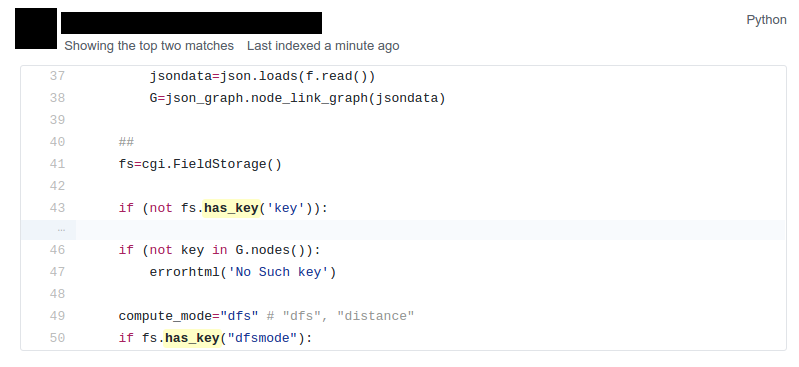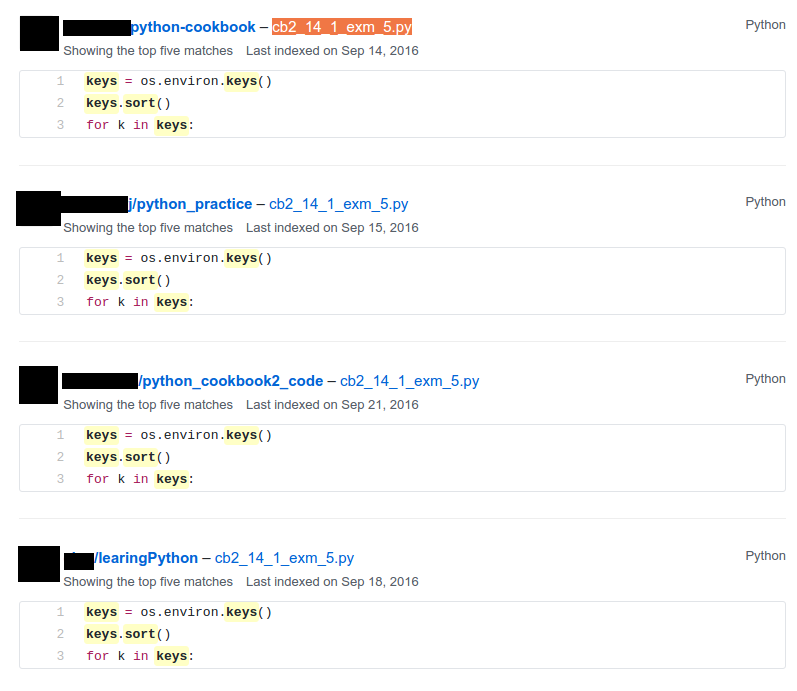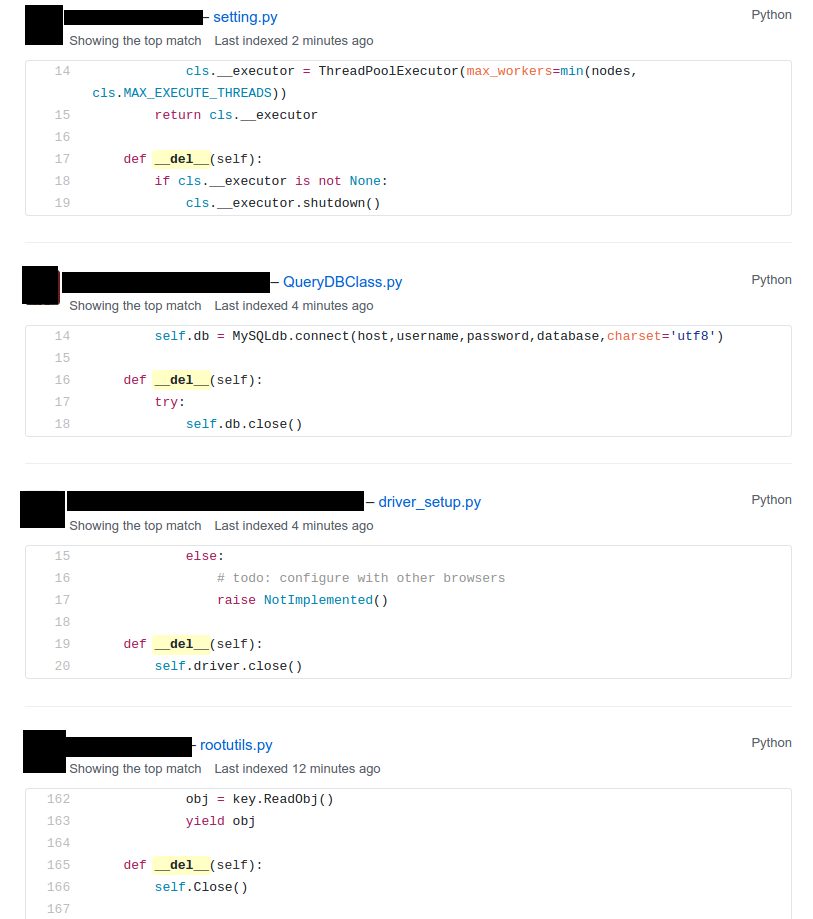Prehistoric Patterns in Python
Lennart Regebro
PyCon US 2017, Portland
Hi! So yes, I'm Lennart Unpronouncable, I've been working with Python fulltime since 2001.

And I wrote the book on how to move from Python 2 to Python 3. It's open source, on github.




I'm born in Sweden, but I live in Poland, with my wife, daughter, cats and fruit trees.
Shoobx is the only comprehensive platform for incorporation, employee onboarding, equity management, fundraising, board & stockholder communication, and more.
I work for Boston company Shoobx. We make a webapp that helps you with a lot of the legal documentation for corporations.
If you don't understand what that elevator blurb says, don't worry about it, your bosses will. Tell them about us.
But enough about me!


>>

This talk is going to be about old code patterns.
Because has Python gained more features, so some things we used to do make no more sense. But there is loads of old code out there, so I will try to explain why that old code looks like it does.
And old does not mean unmaintained. If you wrote a library that needed to support Python 2.4 old patterns may very well remain, because they still work. So you might very well encounter this in maintained code.
And, old tutorials and old books have old patterns. And people keep using them and learning them.
So if you are using these patterns, don't feel bad, I won't judge you.

[Yes I will]
Let's start! And let's start with dictionaries.
if mydict.has_key(x):
OK, firstly, stop using has_key().
if x in mydict:
"in" has been the norm since Python 2.2. It's been 15 years. has_key doesn't even exist in Python 3. And you probably think I'm silly for mentioning this. Let me present to you, github search!


Yes, when you search for has_key on github, it tends to show every few minutes or so. Not that people add it very often, but they are maintaining code that still uses has_key() without changing it.

I even found this! But don't worry, the actual commit replaces has_key with in. It's just the commit message that is backwards.
But hey, it's a dog, I'm impressed it knows git!
for key in mvd.keys(): self.assertEqual(d[key], mvd[key])
Here is another little thing you don't need to do: using the keys() method to iterate over a list. It's not as common as has_keys() but there is a fair amount of matches on githib for this.
for key in mvd: self.assertEqual(d[key], mvd[key])
Just skip the keys() call.
The code I showed before is from the latest version of Django, but it's from a test, so...

But still, if you are using the keys() method at all, you are probably doing it wrong.
keys = mydict.keys()
This is also fairly common. But the keys method has different results in Python 2.7 and Python 3. Only in Python 2 is it a list.
keys = list(mydict)
This is better, it will always make a list.
eater = iter(mydict)
And if you want an iterator, this is the way to do it, although you usually want an iterator because you want to iterate over it and you can iterate over a dictionary without calling iter() first, so I don't know why you ever would do this.
OK, enough about dictionaries, now let's talk about sets!
Sets
Unique values
Fast lookup
Sets are useful, the values in a set must be unique and lookup in sets are fast.
Sets first appeared in Python 2.3. So what did you do before? What else do we have that has Unique values and fast lookup?
d = {} for each in list_of_things: d[each] = None list_of_things = d.keys()
Yes! Dictionary keys! So in fact I lied, this pattern isn't about sets, it's also about dictionaries!
This code example makes a list unique by putting it into a dictionary as keys with a value of None, and then getting a list of keys back.
list_of_things = set(list_of_things)
Today you would just do this instead.
Another usage of dictionary keys like this is when you wanted to do very fast lookups. Checking if a value exists in a dictionary is way faster than checking if it exists in a list.
dicts vs lists
Python 2.7 | 45x |
Python 3.6 | 60x |
PyPy 5.5 | 35x |
This is simply looking if a value exists in a dictionary vs a list. Data is random integers, the set is 200 random integers. Yes, just 200.
And as you see, dictionaries are way faster than lists. So it used to be a pattern that if you needed to do that a lot, you used a dictionary. If you see dict where all values always are None or zero, this maybe be what is happening.
And this means that if you are making a lookup to see if some values exist in a list, consider that maybe it should be a set instead.
sets vs dicts
Python 2.7 | 1.05x |
Python 3.6 | 1.05x |
PyPy 5.5 | 1.02x |
And don't worry, sets are a little bit faster than dictionaries.
OK, enough with dictionaries for real now. Now lets talk about sorting.

Remember I mentioned old books and tutorials? Yeah, this is from the Python Cookbook as you can see. Probably 1st edition, from 2002. Why people commit it to Github in 2016 I don't know.
Let's look at the code.
keys = os.environ.keys() keys.sort() for x in keys: print x,
This makes a list from a dictionary, and then sorts it with the lists sort() method. And that's was the only way to stort things in 2002, making a list and sorting it. But since Python 2.4 we have the sorted() builtin.
for x in sorted(os.environ): print x,
Much better. Because less lines means less bugs. And it also is more robust to use sorted(), because sorted() takes any iterable. It can be a list, set, generator or like in this case a dictionary. sort() only works on lists.
Even better would have been if we could use a list comprehension, of course. But we can't, because of the print statement.
Or... can we?
[print(x, end=' ') for x in sorted(os.environ)]
Of course we can, print is a function in Python 3!
Stuck on Python 2?
Sucks for you!
Just kidding.
from __future__ import print_function [print(x, end=' ') for x in sorted(os.environ)]
You can do this in Python 2 as well.
Calling sort() on an existing list is a little bit faster than calling sorted on the list, since sorted() ends up creating a new list. But the difference is very small, around 2%, less on PyPy.
vs = sorted(vs, lambda a, b: -cmp(a[1], b[1]))
However, the next old sorting pattern is all about speed. For that reason it's the one that you are least likely to encounter, because fixing it is a marked improvement. But that also means it's important to fix it, so I will talk about it anyway.
This code, from a book about Django and Javascript, uses the standard way of sorting a list by passing in a comparison function, in this case a lambda.
comparison functions return 1, 0 or -1 to tell which item of the two is larger, so by sticking a minus first you get a reverse sort.
len(l) | # calls | Per item |
4 | 6 | 1.5 |
10 | 22 | 2.2 |
100 | 528 | 5.28 |
40,000 | 342,541 | 8.56 |
Reference: Jarret Hardie in Python Magazine
Buuuut, the comparison function compares pairs, and the longer the list is, the more possible pairings is there. You see that long lists have a lot more calls per item.
vs = sorted(vs, key=lambda a: a[1], reverse=True)
So therefore, a key argument to sort() and sorted() was introduced already in Python 2.4.
The function now got much simpler, and has only one argument . But how does the statistics look for how many calls the function gets?
len(l) | # calls | Per item |
4 | 4 | 1 |
10 | 10 | 1 |
100 | 100 | 1 |
40,000 | 40,000 | 1 |
Yeah, you get exactly one call per item, always.
With the cmp function we get around 17 times as many calls to getitem as for with a key function. Yeah, 17. The slow bit of sorting is still the actual sorting, but this makes a big difference.
40.000 random integers take only around 20% of the time to sort with a key function instead of a cmp function.
class MyClass(object): def __cmp__(self, other): return cmp(self.value, other.value)
And just as the cmp comparison method is deprecated and gone under Python 3, so is the dunder cmp method on objects. Instead there are the so called "rich comparison functions."
class MyClass(object): def __lt__(self, other): ... def __le__(self, other): ... def __gt__(self, other): ... def __ge__(self, other): ... def __eq__(self, other): ... def __ne__(self, other): ...
There are plenty of reasons to use these instead of __cmp__, like the fact that some types may tested for equality, but not otherwise comparable. You can for example test if a color object is the same as another color object but which of the colours are bigger?
But __cmp__ has a big benefit, you only need to implement one method, not six, and this has meant that people were reluctant to use it.
from functools import total_ordering @total_ordering class MyClass(object): def __lt__(self, other): ... def __eq__(self, other): ...
Functools to the rescue. With total_ordering you only need to implement __eq__ and either less than or greater than.
result = use_blank and blank_value or default
This looks like a logic expression, but it isn't. It's a sneaky conditonal expression!
It means that if use_blank is True, then result gets set to blank_value other wise it's set to default.
But blank_value was a argument. What if it is something that evaluates to false, like a None or an empty set?
Yes: result will be default, not what you pass in as blank_value.
result = blank_value if use_blank else default
This is how to do a conditional expression. It only arrived in Python 2.5, because people couldn't agree on how it should look, and I agree it's not very readable, the condition is in the middle, so I tend to only use it if I have to, which is when I have to use an expression, like HTML templates or similar.
Now, on to something slightly more complex, resource handling!
t = database.start() try: try: t.insert(a_bunch_of_records) t.commit() except DatabaseException: log.exception("Something went wrong!") t.abort() finally: t.close()
Yeah, this also isn't very readable. It's a made up example that make sure that the database transaction is aborted if something goes wrong, and that it's closed at the end no matter what.
It's hard to read because it nests two try statements. try/except/finally only happened in 2.5. Before that you had to nest one try/except inside a try/finally, like this code, and it's those nested try statements that make this code ugly.
t = database.start() try: t.insert(a_bunch_of_records) t.commit() except DatabaseException: log.exception("Something went wrong!") t.abort() finally: t.close()
Already this is better.
with database.start() as t: try: t.insert(a_bunch_of_records) t.commit() except DatabaseException: log.exception("Something went wrong!") t.abort()
But of course, even better is with a context manager.
class MagicResource(object): def __del__(self): # deallocate the object!
Another way to deallocate resources was __del__. This was never a good idea, as __del__ isn't guaranteed to be called. A context manager would be the solution instead.
For the reason that it never was a good idea, I thought deallocating things in dunder del would be unusual.

Boy was I wrong. There's tons of this. I think it's Java and C++ people that do this when they switch to Python.
self.assertRaises(DatabaseException, add_records, arg1, arg2, keyword=True)
On the topic of context managers, unittests assertRaises is a contextmanager in 2.7 and later.
with self.assertRaises(DatabaseException): add_records(arg1, arg2, keyword=True)
So much nicer.
import tempfile with tempfile.TemporaryDirectory() as dir: # Do stuff
Also worth mentioning is that in Python 2.7 TemporaryFile and NamedTemporaryFile are context managers. And in Python 3.2 and later you also have TemporaryDirectory!
Stuck on Python 2?
Sucks for you!
Next: Generators.
def a_generator(): for x in another_generator(): yield x
Generators are awesome, I love generators. But this sort of code annoys me every time. Why do I have to write such stupid code?
def a_generator(): yield from another_generator()
In Python 3.3 and later, I don't!
Stuck on Python 2?
Sucks for you!
Now this is not the only thing yield from does. It also changes how you use coroutines.
But coroutines really require their own talk, but the most important for this is that without yield from it's very hard to yield from a subgenerator with Python coroutines.
It's in fact so hard that I can't even find a single example of it being done without yield from. Python 2 coroutine example, yep, I can find that. Python 2 coroutines with subroutines? can't find em
But it requires you to do a lot of exception handling and closing of the subroutine etc. Yield from does all that for you, it will let a subroutine yield data directly to the called of the coroutine the correct way.
On the topic of Generators and coroutines, Python 3.7 will have a backwards incompatible change I thought I should mention.
def __next__(self): x = self.foo() if x == 0: raise StopIteration return x
Generators are a type of iterators, and iterators is any object with a __next__ method. You signal the end of the iteration by raising a StopIteration exception.
def testgen(x): while x < 100: if x == 31: raise StopIteration x += 1+x yield x
And so you should use StopIteration to stop the iteration ins a generator as well, right? They are after all just fancy iterators, or?
Ah, well, no. This above does indeed work. But raising StopIteration in generators can under specific circumstance cause some obscure bugs.
PEP 479
See PEP 479 if you want the details.
>>> list(testgen(0)) RuntimeError: generator raised StopIteration
The end result is in any case that starting from Python 3.7, raising a StopIteration in a generator in fact raises a RuntimeError.
def testgen(x): while x < 100: if x == 31: return x += 1+x yield x
The correct way is to just return. This will raise StopIteration.
def testgen(x): while x < 100: if x == 31: return "Not an error anymore!" x += 1+x yield x
And in Python 3.3 you can even pass an argument into StopIteration by returning a value.
And this again has to do with coroutines, which are magic. So if you want to do coroutines, you need Python 3.
Stuck on Python 2?
Sucks for you!
self._leftover = b''.join([bytes, self._leftover])
Django 1.11.1: django/http/multipartparser.py
And now, the prehistoric pattern that was the catalyst for this talk. Concatinating strings by joining an empty string, like this example from Django.
It's obvious it's old code, they have a variable called bytes.
self._leftover = bytes + self._leftover
Why not do this instead?
Well, you used to hear people claiming that concatenating strings with + is slow, and that doing a join is faster. But, they say, since CPython 2.5 there are optimizations in string concatenation, so now it is fast, I was told.
So let's look at the benchmarks.
+ is faster than .join
Python 2.4 | 3.0x |
Python 2.7 | 2.7x |
Python 3.6 | 2.1x |
PyPy2 5.4 | 1.5x |
PyPy3 5.5 | 1.2x |
And you see that using addition to concatenate is faster. Even on Python 2.4! So using join() was never faster!
So where does this claim that join is faster come from? I think this is a big misunderstandning.
This is slow:
result = '' for text in long_list_of_text(): result = result + text return result
This code will be slow, but...
Much faster:
texts = long_list_of_text() result = ''.join(texts) return result
This code will be fast.
join is faster than +
Python 2.4 | 2x |
Python 2.7 | 2x |
Python 3.6 | 2.5x |
PyPy2 5.4 | 700x |
PyPy3 5.5 | 700x |
Join is WAY faster when joining an existing list of strings. This is native strings. With Unicode the difference under Python 2 is around 200 times!
result = '' for x in xrange(1000): result = result + x * char
vs.
l = [] for x in xrange(1000): l.append(x * char) result = ''.join(l)
But I discovered something interesting here. If you are actually generating the strings in a loop, then it's faster to add in that loop than making a list and then joining it!
+ is faster than .join again!
With native strings
Python 2.4 | 2.2x |
Python 2.7 | 2.1x |
Python 3.6 | 1.9x |
PyPy2 5.4 | 0.01x |
PyPy3 5.5 | 0.02x |
Except on PyPy!
This is native strings, so byte strings on Python 2, Unicode on Python 3.
But .join is still faster than +!
With non-native strings
Python 2.4 | 17x |
Python 2.7 | 27x |
Python 3.6 | 34x |
PyPy2 5.4 | 67x |
PyPy3 5.5 | 83x |
Constants and Loops
const = 5 * 3.5 result = 0 for each in some_iterable: result += const
This is a pattern that was suggested to me that I should bring up. And I wasn't going to do it until I started benchmarking it.
Here we see something simple, calculating a constant outside the loop. That should speed up the loop, right because you don't have to calculate the constant, right?
Constants and Loops
result = 0 for each in some_iterable: result += 5 * 3.5
This should reasonably be slower. But the claim is that it isn't anymore. CPython optimizes this, since 2.5.
Outside vs Inside
5 * 3.5
Python 2.4 | 2.0x |
Python 2.7 | 1.0x |
Python 3.6 | 1.0x |
PyPy2 5.4 | 1.0x |
PyPy2 5.5 | 1.0x |
And yup. It used to be much faster to calculate it outside of the loop, but since Python 2.5 it isn't. CPython will find that multiplication and calculate only once.
Outside vs Inside
5 / 3.5
Python 2.4 | 2.0x |
Python 2.7 | 2.0x |
Python 3.6 | 1.0x |
PyPy2 5.4 | 1.0x |
PyPy3 5.5 | 1.0x |
But if you have a division in the calculation, the Python 2.7 gets slow again!
Python 3 and PyPy are still fine, though.
But of course, my example is stupid.
result = len(some_iterable) * 17.5
It can be replaced with this. Which is about 250 times faster. Except on PyPy where it's just 10 times faster. Which is still twice as fast as Python 2.7.
So, let us take some less stupid example.
Outside vs Inside
const = 5 * a_var result = 0 for each in some_iterable: result += each * const
Here the value we add is dependent on both the iterator variable and a local variable. This is more realistic.
Outside vs Inside
each * 5 * a_var
Python 2.4 | 1.3x |
Python 2.7 | 1.3x |
Python 3.6 | 1.3x |
PyPy2 5.4 | 1.0x |
PyPy3 5.5 | 1.0x |
Now the optimization dissappeared On CPython 3 as well. Calculating the constant outside of the loop is now faster again.
PyPy still succeeds in optimizing this.
Outside vs Inside
each * 5 ** a_var
Python 2.4 | 1.8x |
Python 2.7 | 2.0x |
Python 3.6 | 2.0x |
PyPy2 5.4 | 29x |
PyPy3 5.5 | 2.2x |
Unless you use a power in the calculation of the constant, where PyPy's optimization also dissapears to the point of calculating it inside the loop is around 30x slower!
So this pattern turns out not to be prehistoric at all!
So, you should calculate constants outside of the loop.
And it's the same with calculating constants outside of the loop. It feels like it should be faster, and it often is.
Conclusion
Python is awesome
Except the conclusions that you should test your code, and not optmize without benchmarks, my takeaway from writing this talk is that Python is awesome.
Python is such a fantastic language partly because what intuitively feels like the right thing to do, tends to in fact be the right thing to do. The short, readable code most of the time tends to be the fastest code. Not always, but mostly.
Thanks!
Thanks to everyone who suggested outdated idioms, even if I didn't include them:
Radomir Dopieralski, James Tauber, Sasha Matijasic, Brad Allen, Antonio Sagliocco, Doug Hellman, Domen Kožar, Christophe Simonis
